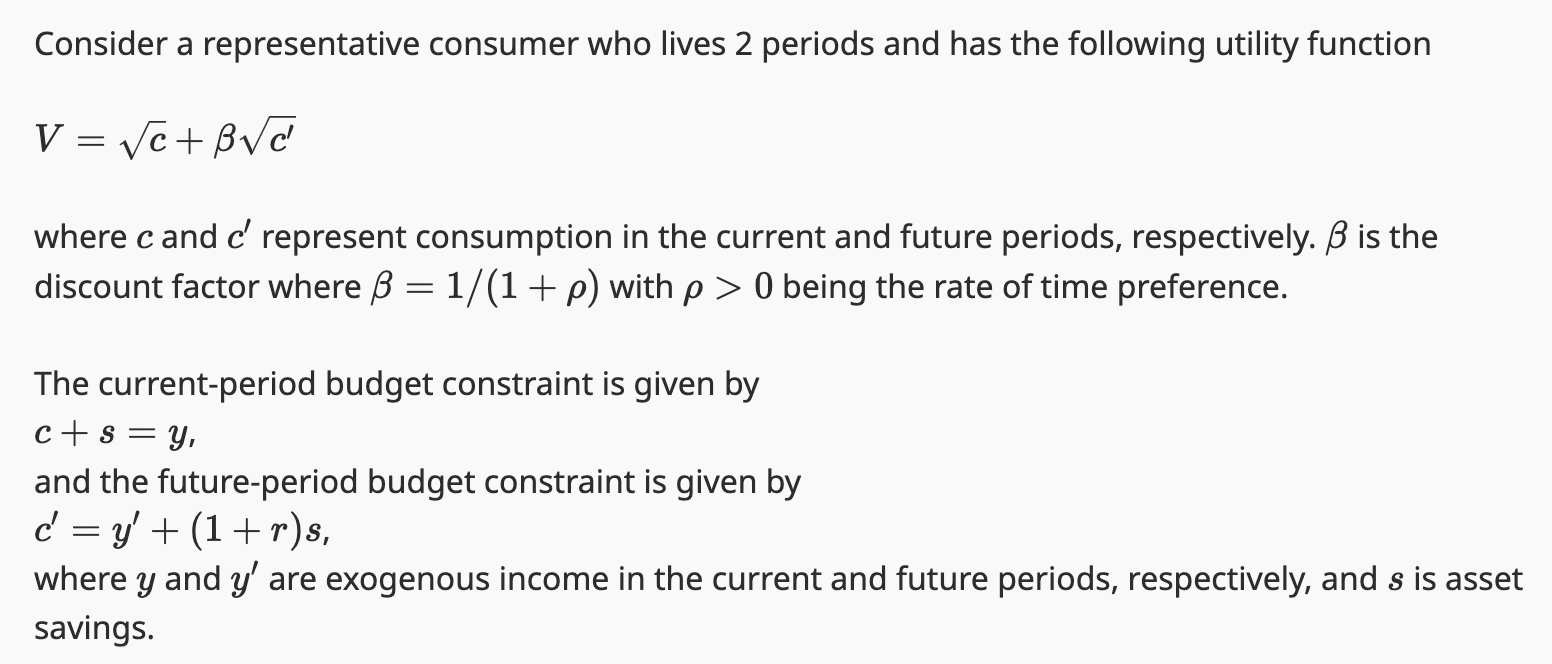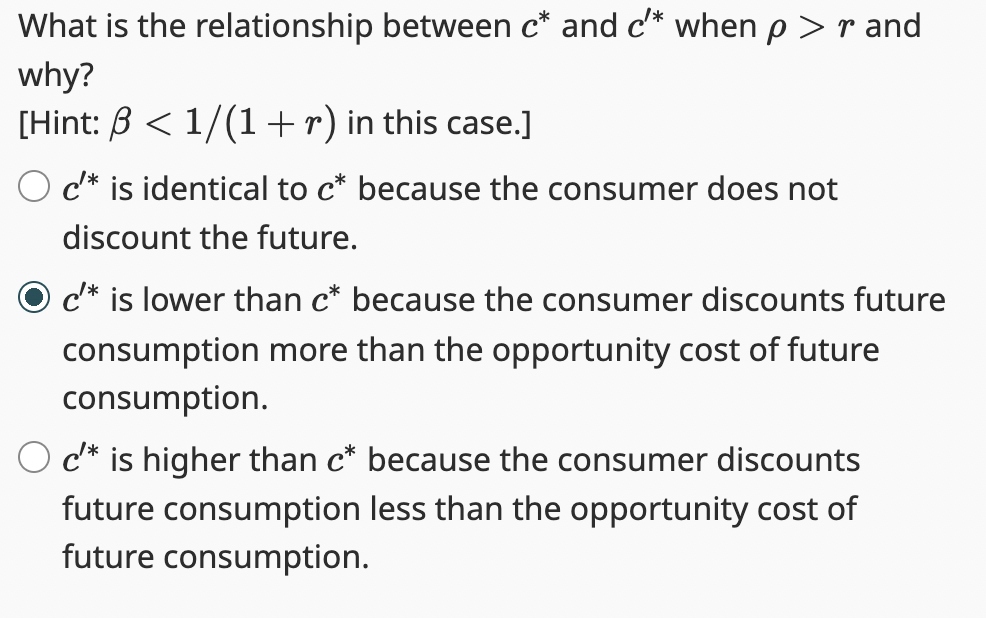Answered step by step
Verified Expert Solution
Question
1 Approved Answer
Consider a representative consumer who lives 2 periods and has the following utility function V = c + Bc where c and c' represent


Consider a representative consumer who lives 2 periods and has the following utility function V = c + Bc where c and c' represent consumption in the current and future periods, respectively. is the discount factor where = 1/(1 + p) with p > 0 being the rate of time preference. The current-period budget constraint is given by c+ s =y, and the future-period budget constraint is given by c = y + (1+r)s, where y and y' are exogenous income in the current and future periods, respectively, and s is asset savings. What is the relationship between c* and c'* when p > r and why? [Hint: < 1/(1+r) in this case.] c'* is identical to c* because the consumer does not discount the future. c'* is lower than c* because the consumer discounts future consumption more than the opportunity cost of future consumption. c* is higher than c* because the consumer discounts future consumption less than the opportunity cost of future consumption.
Step by Step Solution
★★★★★
3.44 Rating (154 Votes )
There are 3 Steps involved in it
Step: 1
Here are the steps Since p r we have 11p 11r This means the discount rate on ...
Get Instant Access to Expert-Tailored Solutions
See step-by-step solutions with expert insights and AI powered tools for academic success
Step: 2

Step: 3

Ace Your Homework with AI
Get the answers you need in no time with our AI-driven, step-by-step assistance
Get Started


